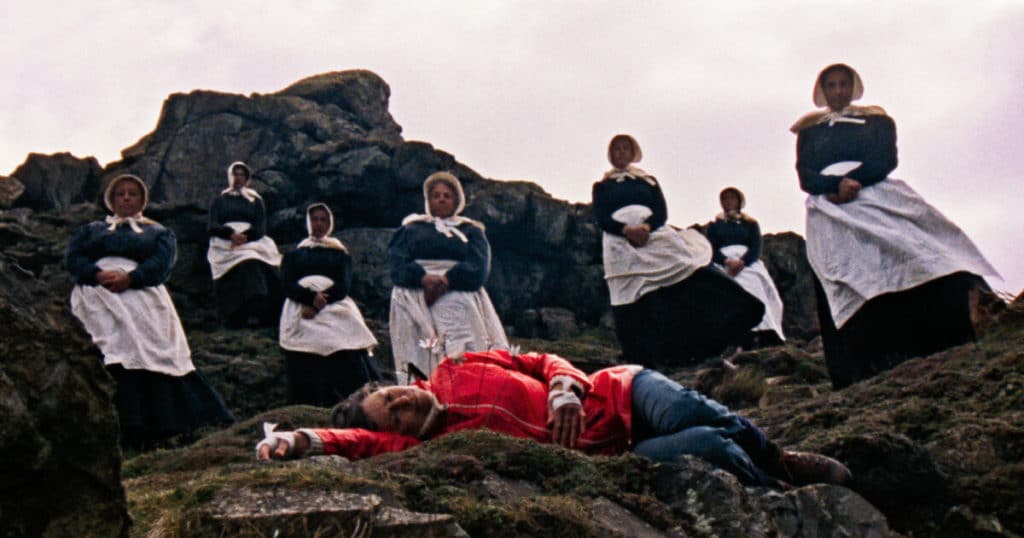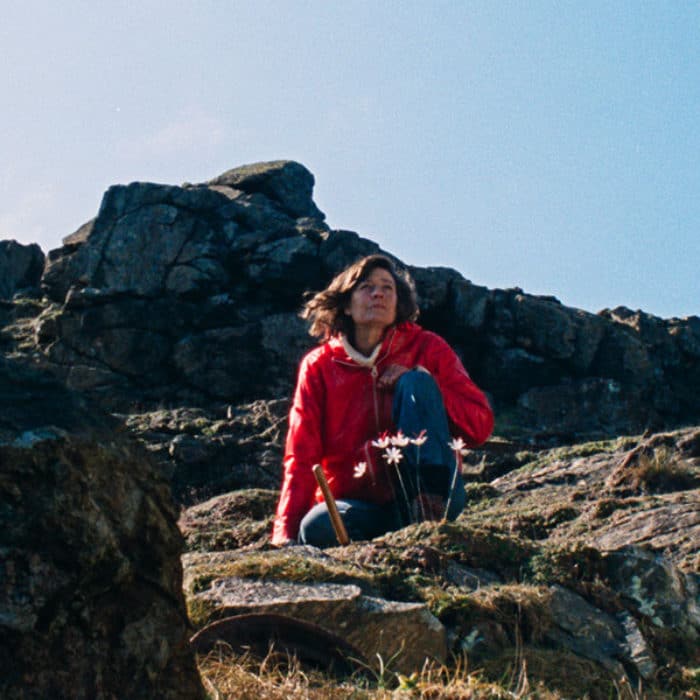
The beautiful and evocative coastal landscapes of Enys Men (2022) make for an unorthodox tourist board advertisement for a fantastical Cornwall – if you like your weekends away to feature a certain amount of the uncanny and the uncertain, at least. Taken as a series of still images, the film feels like a tribute to Lawrence Gordon Clark’s Stigma (1977) and to an extent, The Stone Tape (1972): the imagery, the isolation and the unorthodox exploration of ghosts are all present and correct. But there’s an issue, and it’s this: Enys Men is no more than a series of still images. Where it seems to be building atmosphere and driving towards some fascinating sliver of Cornish history or folklore, it takes the decision to dissipate that atmosphere by shattering into a handful of component parts, none of which feel like they have ever fitted together, nor ever could. This is a folk horror coffee table book, beautiful in its way, but insufficient, and too free-floating to really be considered a film, unlike the films which have inspired it.
In this muzzy-headed assemblage of places and ideas, we meet a nameless woman (Mary Woodvine) who is spending time on the remote island of the title to record information on a rare type of flower. To say she is underemployed would be an understatement; the ‘Volunteer’, as she’s called in the end credits, spends a few moments every day recording the temperature out where the flowers grow on one of the cliff tops. On her way back to the cottage where she’s staying, she pauses to drop a stone down an old well, then heads home, fires up an old generator, and spends the rest of daylight hours watching her tea caddy run empty. Horror enough there, perhaps. She receives occasional supplies, but that’s it: her teenage daughter is in the house with her (maybe; sometimes) but their communication is even more monosyllabic than is traditional with this generational gap.
The island seems to have been abandoned at some point around the turn of the 20th Century. There was, a wall plaque near the old harbour tells us, a maritime disaster here whereby a rescue vessel went to the aid of a supply ship but foundered, losing all hands (meaning, presumably, all or most of the men of the island). There are other indications of a former population, with hints at the long reach of the Industrial Revolution, with a small mine on the island, and a small chapel. But everyone is long gone, and the woman is here for an unspecified amount of time, with only radio contact with the outside world. She begins to see echoes of the past: people come and go from the cottage, children in archaic May finery crowd towards the door of the house – which seems, on certain glances, to be completely derelict. Men stand, silently, below ground, in their mining gear; men come ashore, wearing old-fashioned flotation devices and lifeguards’ uniforms.
It’s interesting, visually-appealing material in its own right, but so, so disparate. It tantalises at ideas of how ghosts are made, and/or how much ghosts know about what they are in ways which feel like a feverish spin on the narratively-coherent The Others (2001). But without dialogue, storyline, direction and denouement, it can never, ever be that. So what, then? Few things are clear; everything is detached from everything else, and where there is a kind of consistency, it’s boring. The film generates a lot of atmosphere, but nothing really lives there. At its weakest, the film feels like its director is almost lackadaisical about any of the usual filmmaking concerns, prioritising aesthetics which grow weaker with repetition, because he’s hoping the audience will overlay a purpose and a point on his behalf. Another explanation is that he doesn’t really care. It looks how he wanted it to look; nothing else really enters into it. Moments of unclear humour are baffling and odd, dissipating the dread that, elsewhere, the film proves more than capable of creating. And then, at last, it dissipates all of the dread, all of it. Metaphors are only effective when they represent something beyond themselves. Otherwise, what are they for?
Enys Men is set in 1973, for reasons which are unclear, other than that directors love to fill their films with leftover analogue technology and, in the case of director Simon Jenkin, he has shot the film on 16mm, too: the commitment to nostalgia here is thorough. Perhaps it has a Seventies setting to reflect the films and TV which went some way to inspiring it; perhaps it’s just an almost-obligatory dash of the kind of hauntological hipsterdom which so many filmmakers now love. It adds nothing specific, however, except some warping and flaring to the film -again, modern filmmakers go a heck of a long way to make their films look quaintly damaged. The audio was overlaid after recording, too, which furthers the strangely unsettling double-distance feeling between audience and actors. Again, it’s effective as a set of weird visuals, and it sounds suitably fever-dreamy too, but – that’s your lot. It’s also unfortunate that the film has garnered these links to folk horror, really, as the essence of folk horror is in the power of its stories and legends. This is not a folk horror in any meaningful sense; standing stones do not a folk horror make. No, this is a film made to be analysed, which we’re all obligingly doing with greater or lesser success. Sumptuous but partial, gorgeous but empty, symbolic without the requisite ideas, Enys Men may represent a different way to use the art of film, but it doesn’t work as a film.
Enys Men is on general release in the UK now.
